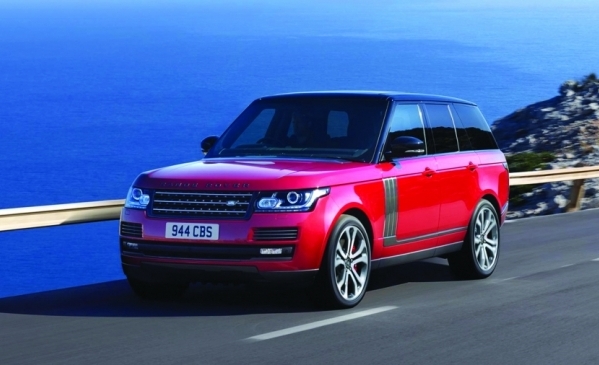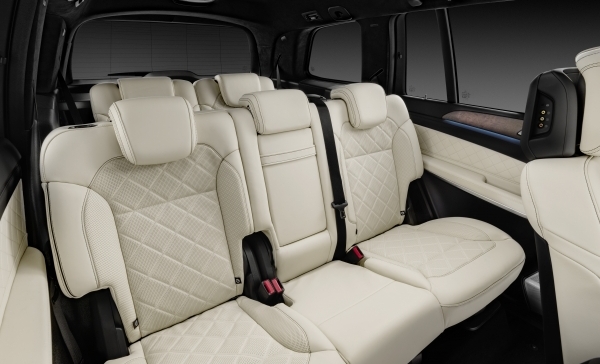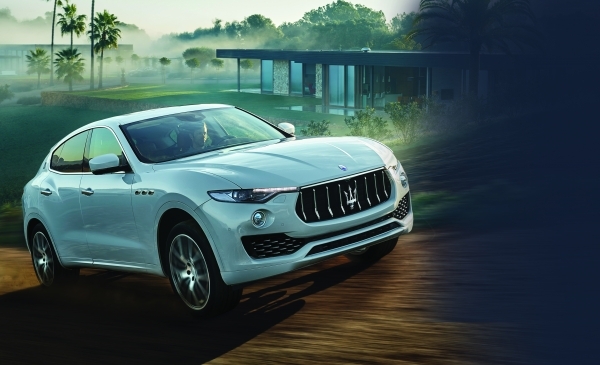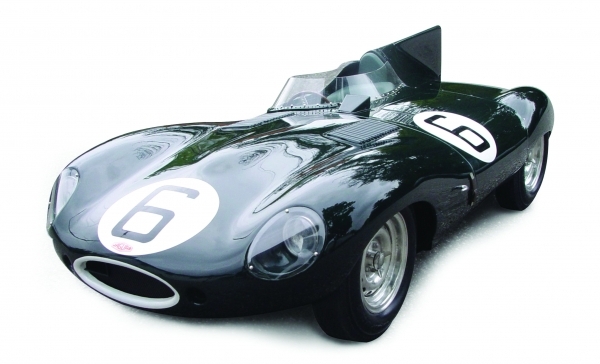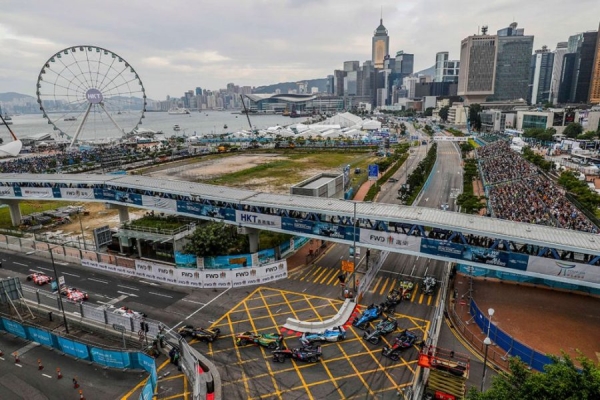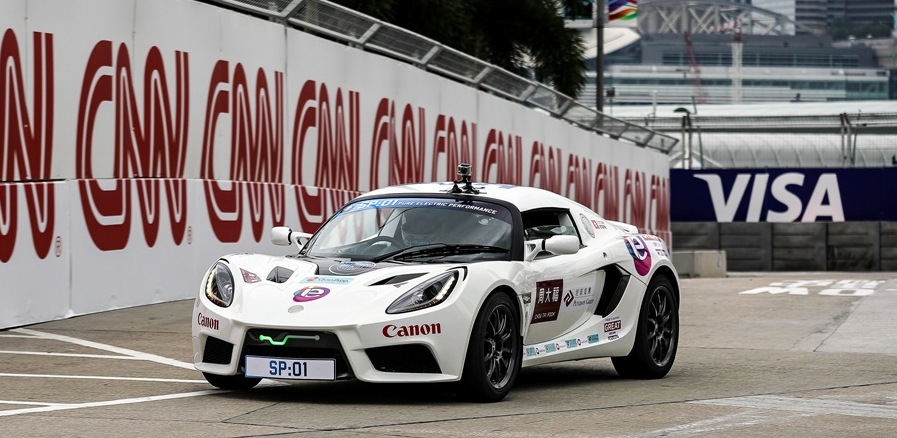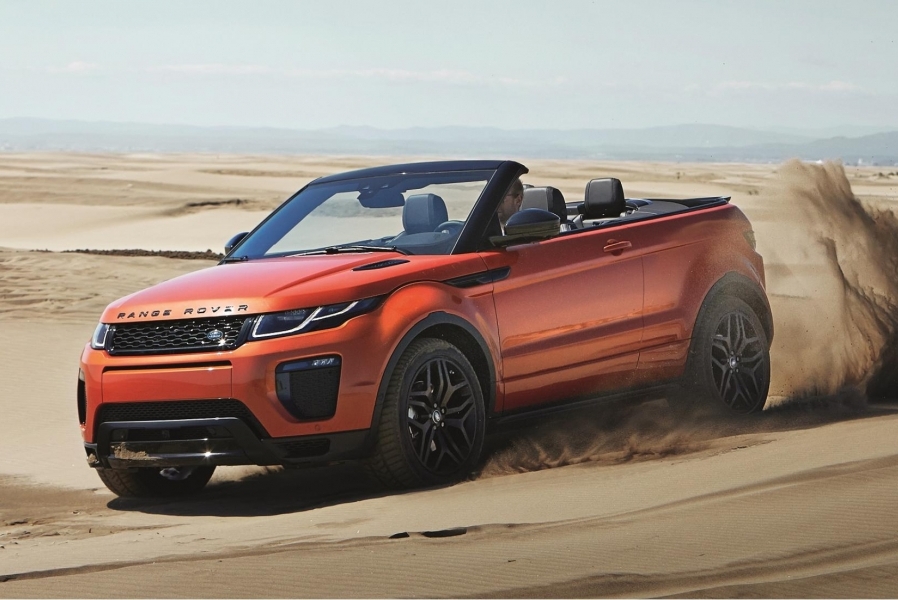
It’s a bit too soon to say for certain whether the new Range Rover Evoque Convertible is a triumph or a disaster. By chopping the top off its smallest, funkiest model, the company is either pioneering a brave new class of prestige off-roaders – with the added benefit of infinite headroom – or creating a ghastly mash-up of wholly incompatible automotive ingredients. There’s little room for any other outcome.
The logic behind creating the convertible Evoque seems sound. Chunky, stylish SUVs are the transport du jure for fashion-conscious urban motorists, many of whom wear them like accessories. The downside of driving a tall four-by-four, though, is that it’s hard for people to see just who’s behind the wheel. By lifting the roof off, you gain the advantage of being highly visible, while also getting to experience the timeless joy of open top motoring.
As is the case with any uber-stylish morsel of fashion, it comes with a number of downsides. The first of which pretty much unforgivable by any true fashionista – losing the roof has resulted in piling on the pounds for this baby Range Rover.
The Evoque Convertible is almost 300kg heavier than the two-door Coupe edition which it’s based on. This is largely thanks to the addition of all the electric motors and scaffolding needed to make the roof go up and down, as well as the hefty girders required to strengthen the chassis now that there’s no ridged roof to complete the body cell. Tipping the scales at just under two tonnes, the Evoque is a heavyweight, even though it’s relatively compact for an SUV.
As well as gaining weight, the Evoque convertible sheds luggage space to the oily-whirring bits as well as to the stowage room needed for the tucked-away soft top. A normal Evoque offers 451 litres of baggage allowance, cut to just 251 for the convertible.
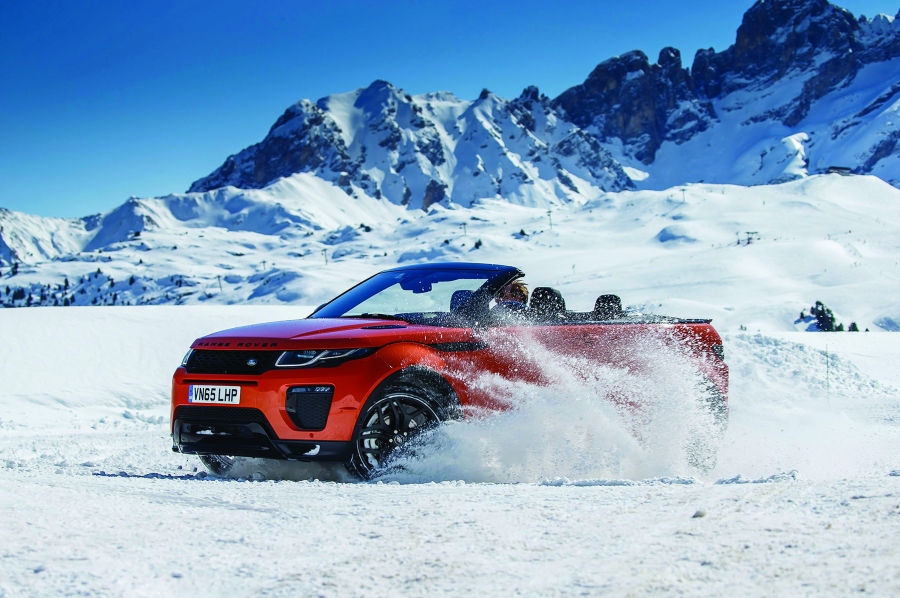
As well as being small, the boot is somewhat awkward to access, having something of the long and shallow feel of a safety deposit box. To make matters worse, the rear seats don’t fold down, so cargo capacity can’t be increased for special occasions.
Of course, increased weight means decreased speed – a problem only compounded by the choice of engines available on the Evoque. The power plants are restricted to four-cylinder units only, with a couple of diesels and only one petrol motor in the line-up.
The diesels are ponderously slow by modern standards, with 0-62 mph taking 10 seconds plus. The petrol engine is the quickest, though its 0-62 mph is a far from rapid 8.6 seconds.
Even with a petrol power plant, the engine sounds busy, largely thanks to the constant flicking up and down of its nine-speed automatic gearbox. While the driver can opt to change gears, with nine to choose from, it’s an unending and joyless task.
Assuming you have the patience to wait long enough for the Evoque Convertible to actually build up some momentum, the medium to high-speed handling isn’t as bad as you might fear. Granted, there’s a lot of weight that needs moving about, but most of it is tucked down low, so body roll isn’t too extreme when it comes to the more forceful cornering.
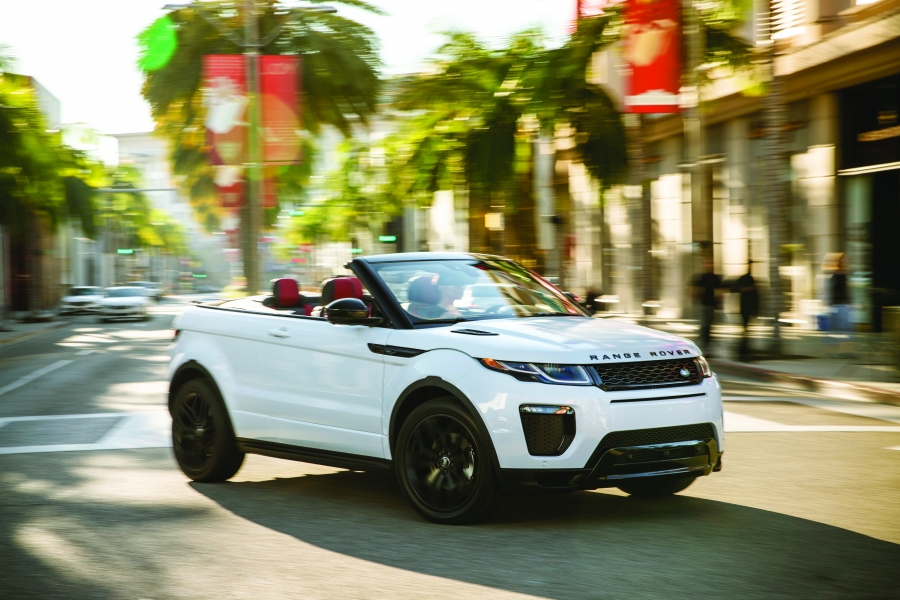
This was never going to be a car for performance driving enthusiasts, with the handling disappointment almost entirely predictable. On bumpy, undulating road, the chassis twists noticeably, flagging up the roof ‘s usual role of holding everything together. On top of that, the steering is too light and too vague, the engine too weak and the brakes are nearly overwhelmed by the task of slowing all that mass.
In all, there’s a lot wrong with the Evoque Convertible, at least when judged in strict car terms. To assess it solely as a car, though, would be to almost entirely miss the point.
The correct way to view the little topless Range Rover – and the way that most car buyers view valuable vehicles – is as a lifestyle choice. In this respect, it fares rather better.
First and foremost, it’s very striking to look at. Roof up, it boasts almost exactly the same lines as its fixed head Coupe elder sibling – perhaps not pretty, but certainly noticeable. As befits a fashion accessory, there’s plenty of ‘bling’ to let other road users know that the driver has splashed out on some serious badge. The icing on the top is its Xenon headlights, which thoughtfully include LED Signature surround, adding bit of sparkle to daytime driving.
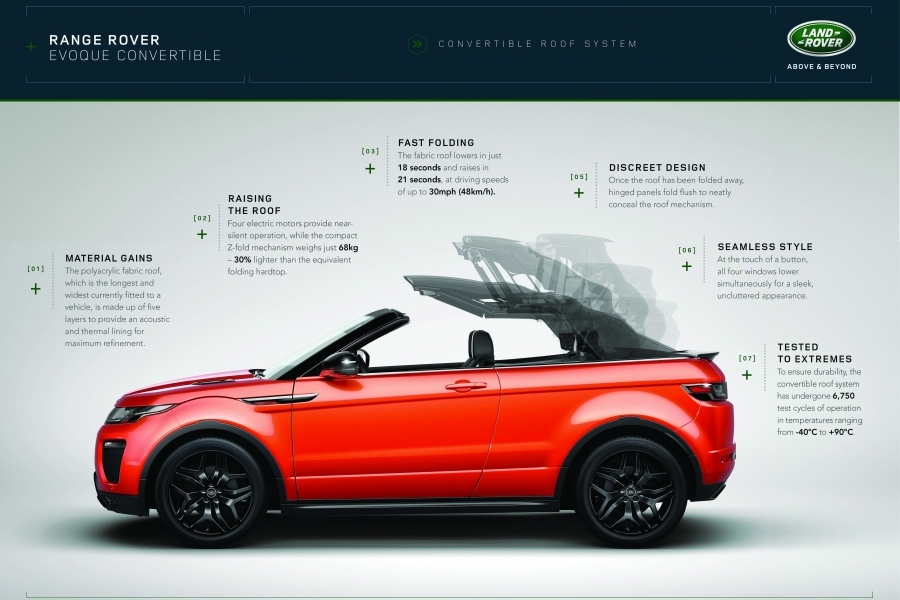
With a press of a button the soft top tucks away in 18 seconds, leaving an almost completely clean, forward raked bodyline running straight from tailgate to bonnet badge. With frameless doors, the only things poking over that high parapet are the steeply raked windscreen and chunky leather head rests.
The soft top can be raised or lowered at up to 30 mph and, at that speed, there’s remarkably little wind buffeting. This is thanks, in no small part, to the high-sided bodywork and rakish glassware. Even at motorway speed, the resulting turbulence is never less than tolerable.
The experience of driving with the top down, though, is truly remarkable. Despite the heavy, wobbly ride, driving the Evoque top down feels rather like flying – albeit in something akin to an airborne fortress. Perched fairly high off the road surface – and with a completely unrestricted view of the sky – it’s not too hard to maintain that particular illusion.
Drivers and passengers, though, are well looked after. The double-stitched leather seats are both comfortable and supportive, with the front seats boasting 12-way power adjustable positioning, including the facility for recalling the required settings for a selection of drivers.
Overall, there’s just enough leg room in the back seats to accommodate a couple of adults in reasonable comfort for shortish journeys and, when the roof is raised, almost enough head room. It is, however, a strict two-person rear pew, with no provision for any third back seat passenger.
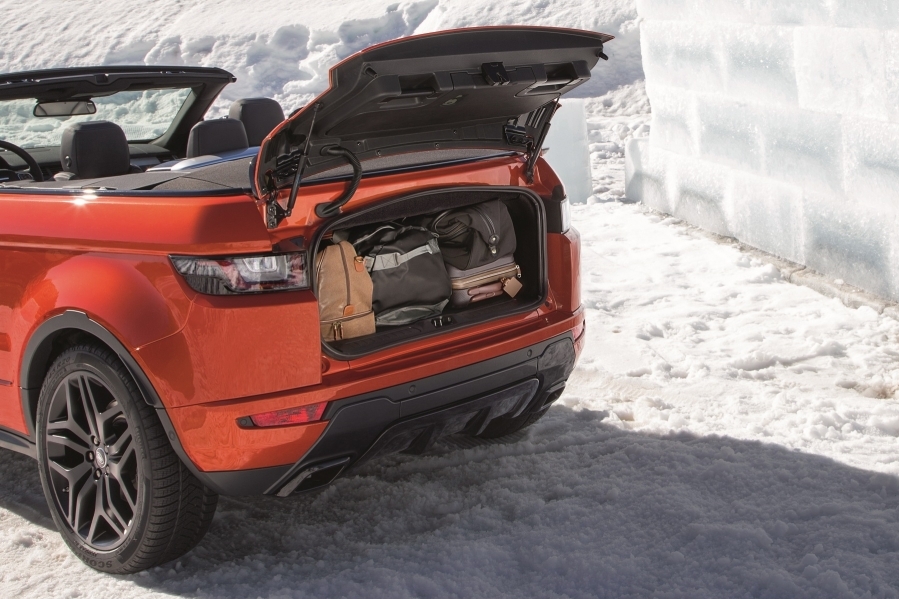
Overall, everything in the cabin, though, is a tactile delight, with the leather seats and steering wheel all having a comforting solidity. Indeed, every button and switch is pleasingly robust to the touch.
The Evoque features Range Rover’s InControl Touch Pro infotainment system, accessed through a generously sized 10.2 inch screen. As well as the usual interface for mobile devices, satellite navigation and climate control, the system also allows users to configure interior mood lighting, helping to ensure that – even at night – everyone can see just who’s inside the Evoque Convertible.
As well as style, entertainment and comfort, this baby Range Rover also helps the driver out when it comes to safety. There is, for example, automatic lane-keeping assistance, giving due warning in the event of drifting out position on the highway. Should matters get even more seriously out of hand, hidden roll-over hoops spring into position in as little as 90 milliseconds whenever the car detects any possibility of upending.
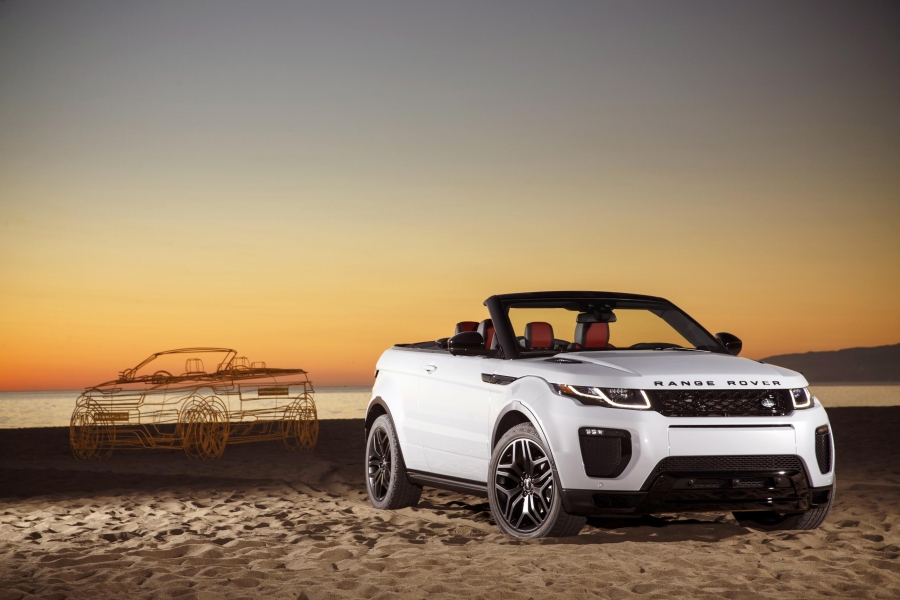
While the car may not be all that good on the road, it’s actually quite good off-road. It’s not, admittedly, quite as able as its larger Ranger Rover Vogue sibling, but it’s still substantially better than many of the pretend SUVs – the BMW X3 and Audi Q3, we’re talking about you here.
To be fair, its Terrain Response electronics and all-wheel drive can tackle some genuine off-road challenges. Decent ground clearance allows lumpy surfaces to be navigated with ease, while Range Rover’s Hill Descent Control system takes over when it comes to getting down some frankly scary angles, ensuring the driver need never intervene on the brakes. The Evoque even does a passable motor yacht impersonation, wading through water up to 50cm deep.
In truth, the Evoque customer is never likely to use any of these off-road abilities, though having them just adds to its allure. Plus – in the event that a natural disaster befalls the world’s urban spaces – the drivers of this car stand a better chance of making a run for it than the average SUV pilot. As a result, much of the currently fashionable post-apocalyptic fiction may have to be re-written to feature a much higher proportion of urban sophisticate Evoque-owner survivors.
Flawed in ways that don’t really matter to its target market and gifted in lots of ways that do, Range Rover seems likely to have scored a class re-defining hit with the Evoque Convertible. Just as all the other prestige brands copied Range Rover’s original luxury off-roader, it’s likely to be just a matter of time before Mercedes, BMW, Lexus et al release their own drop-top lux off-roaders.
Model Range Rover Evoque Convertible
From £48,200 (HK$463,000 plus import duty)
Engine 2.0 litre straight four
Power (BHP) 236 bhp
Transmission 9-speed automatic through
four wheel drive
0-62 mph 8.6 seconds
Top speed 130 mph
CO2 204g/km
Fuel economy: 32.9 mpg




